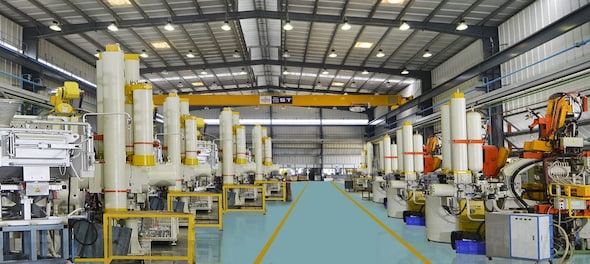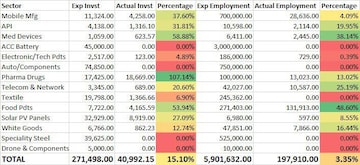
The production linked incentive (PLI) schemes by the Government of India is expected to boost hiring across sectors in the next two years. As per data by TeamLease, 60 percent of employers in India are positive about the PLI sector aiding hiring intent.
The higher positive hiring sentiment is attributed to the pharmaceutical industry (68 percent), followed by white goods industry (67 percent) and textile products (62 percent). The boost from the PLI scheme is also estimated to impact the MSME ecosystem and bring more women to the workforce, mentioned that PLI Impact on Job Creation report.
“The PLI scheme is a revolutionary one. It will not only boost investments and growth across industries but is also expected to lead a significant surge in employment opportunities,” said Sumit Sarabhai, Business Head, Emerging Vertical, TeamLease Services.
Which cities prefer to hire women, which don't?
As per the report, from an organisation size perspective, small and medium-sized organisations are expected to hire the most with 70 percent hiring intent under the scheme. This will be followed by large organisations with a hiring intent of 22 percent.
In terms of cities, employers from Gurgaon and Indore have the highest hiring intent at 71 percent. Interestingly Kolkata (69 percent), Delhi (67 percent) and Nagpur (67 percent) still prefer hiring male candidates while cities like Chandigarh (31 percent), and Chennai (30 percent) are more inclined towards female employees, especially across industries like textiles, pharmaceuticals, and large-scale electronics manufacturing.
The pharmaceutical industry is also inclined towards hiring from the LGBTQ
+community. The electronics manufacturing industry (60 percent) and textile industry (66 percent) predict net incremental growth for women of up to 10 percent.
In terms of the job profiles, the large-scale electronics manufacturing industry (70 percent) hiring blue collar workers and (60 percent) employers hiring for temporary staffing, are foreseeing up to 10 percent net incremental growth.
Is it all rosy with the PLI schemes?
Atma Nirbhar Bharat Abhiyan was launched two years ago with much fanfare in an effort to solve the jobless growth syndrome. There are three main objectives of this programme — first, to put the domestic manufacturing sector on a solid footing, second, to create jobs, and third, to reduce India's reliance on imports.
In order to achieve these objectives, the PLI scheme was designed by carefully selecting a set of industries. A total of 13 major industries were selected, including textiles, automobiles, pharmaceuticals, large-scale electronics, and telecom and networking. In the Union Budget 2023, over Rs 8,000 crore has been allocated to various PLI schemes.
For these schemes, the Revised Estimate (RE) in FY22-23 was Rs 2,616 crore, so this makes it a three-fold increase. It is noteworthy to know that the Budget Estimate (BE) for FY22-23 was at nearly Rs 4,000 crore.
 Source: Data by DPIIT
Source: Data by DPIITChief Economic Advisor V. Anantha Nageswaran said in November last year that as of September 2022, as per data by Department for Promotion of Industry and Internal Trade (DPIIT), the investment in the pharmaceutical sector was at 107 percent of the target but employment generation was just at 13 percent.
Mobile phone manufacturing was also cited as doing well, but the details contradict that. Investment met 38 percent of the target, but regarding employment, only 4 percent of the government's own targets were met.
In electronics, just 4.89 percent of the investment target was met with only 0.39 percent of the jobs target being fulfilled as of September 2022.
“PLI is for the medium and long term; it is about creating capacity within India to become a global leader, to attract supply chains into India and to facilitate China-plus-one to happen. The PLI scheme is likely to gain momentum. Right now it is happening in two or three areas — mobile phones, pharmaceuticals and chemicals but it has to pick up steam in other areas as well and hopefully in the next two years it will happen,” Nageswaran had said addressing the annual session of Indian Chamber of Commerce last year.
(Edited by : Shoma Bhattacharjee)
First Published: Mar 3, 2023 5:37 PM IST
Check out our in-depth Market Coverage, Business News & get real-time Stock Market Updates on CNBC-TV18. Also, Watch our channels CNBC-TV18, CNBC Awaaz and CNBC Bajar Live on-the-go!


Supreme Court says it may consider interim bail for Arvind Kejriwal due to ongoing Lok Sabha polls
May 3, 2024 4:57 PM
10% discount on fare on Mumbai Metro lines 2 and 7A on May 20
May 3, 2024 2:40 PM

